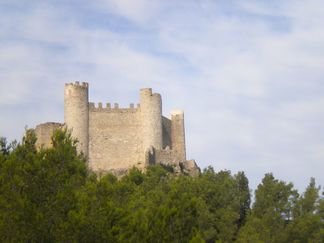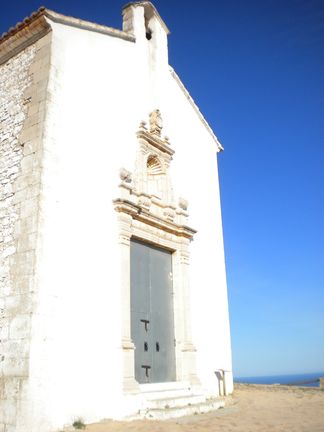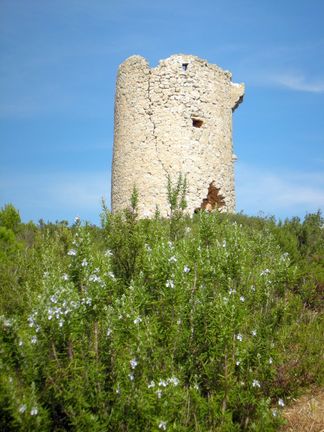Alcalá de Xivert Castle
T
The Alcalá de Xivert Castle is of Muslim origin, but for the most part the construction was carried out by the Knights Templar and by the Order of Montesa. The Castle preserves two distinct parts: the Arab and the Christian. The first comprises the external walled enclosure, from the 10th and 11th centuries, the second is from the 12th century and the Templar Fortress on top.
The Castle is situated within the Natural Park of the Irta range, opposite the town of Alcalá due Xivert. If you want more information about the natural park, click here.
Xivert Castle was part of the Muslim network of fortifications that guarded the road to Valencia.
Highlights
- The Arab inscription of the wall "God and water".
- The Homage Tower is accessible only through the walk on the top of the wall.
- The Grand Hall, is situated at the same place as the Homage tower. This room is restored in a Gothic architectural style.
- The Tanega Tower was used as a jail and is located to the east.
- The Twin Tower are the best preserved part of the Castle. They were built by the Knights Templar.
Ruta 1: Castillo de Xivert
We start the route from the restaurant located on the main Xivert road, eastbound until you cross under the highway.
At this point we will choose the path on the left, until we find a vertical wooden sign that will indicate the ascent.
We begin the ascent until we get into a pine forest. We meander through the pine forest to finish the ascent. Once we reach the top we can access the castle of Xivert and enjoy the castle and its views.
The descent will be made by the former "assagador de la Serra" that will take us to the corral de la cruz, from where we will start the return home. The total distance of the route is 8 km. approx.
- Distance: 7'4 km.
- Difficuty grade: Medium
- Aproximate time needed: 2H 30'
Santa Lucía Hermitage
The Hermitage of Santa Lucia and San Benet is dedicated to both saints, which is not very common. It opens to the public on December 13 on the occasion of the celebration in honour of Saint Lucia and on June 11 for the celebration of Saint Benet. On both occasions a mass and a pilgrimage are celebrated. A curiosity of the pilgrimage is that it is women who carry the figure of Saint Lucia and men, that of Saint Benet.
The building of the Hermitage is situated to the south of the Urbanization of El Pinar, on the mountain of San Benet that borders the natural park of the Irta range. It offers the best view of all the beaches on the Alcossebre coast. On clear days the silhouettes of the Columbretes Islands can be seen.
The church is à 17th century construction in the Valenciano Baroque style. One of its towers may have been the watchtower in ancient times. The paintings and the vault as well as the ceiling have been recently renovated.
One of the hiking trails that leads to the Ebro tower leaves from the Hermitage. It is an incredible ride of slight difficulty that allows you to enjoy the best views of the coast.
Ebrí Watchtower
The Ebri watchtower is located 1.7 km northeast of the El Pinar urbanization in Alcossebre on Mount Ebri at an altitude of 499 metres.
The tower, built in the 16th century, was part of the alert network of Xivert Castle. This type of watchtower can be found along the entire Levantine coast. They were built to give notice to the inhabitants of The coastal towns of the arrival of the Berber pirates, who came to the Levantine coast to carry out looting and abductions.
The tower is built on a circular platform 5.5 metres in diameter and has a height of 8.5 metres. The towers did not have a conventional door at ground level, but the entrance was made through a small window located on top of the tower.
From the tower you can enjoy a wonderful view of the entire southern part of the coast. The northern part is hidden by mountains near the coast and was guarded from another watchtower located in Peñiscola territory: the Baum tower.


